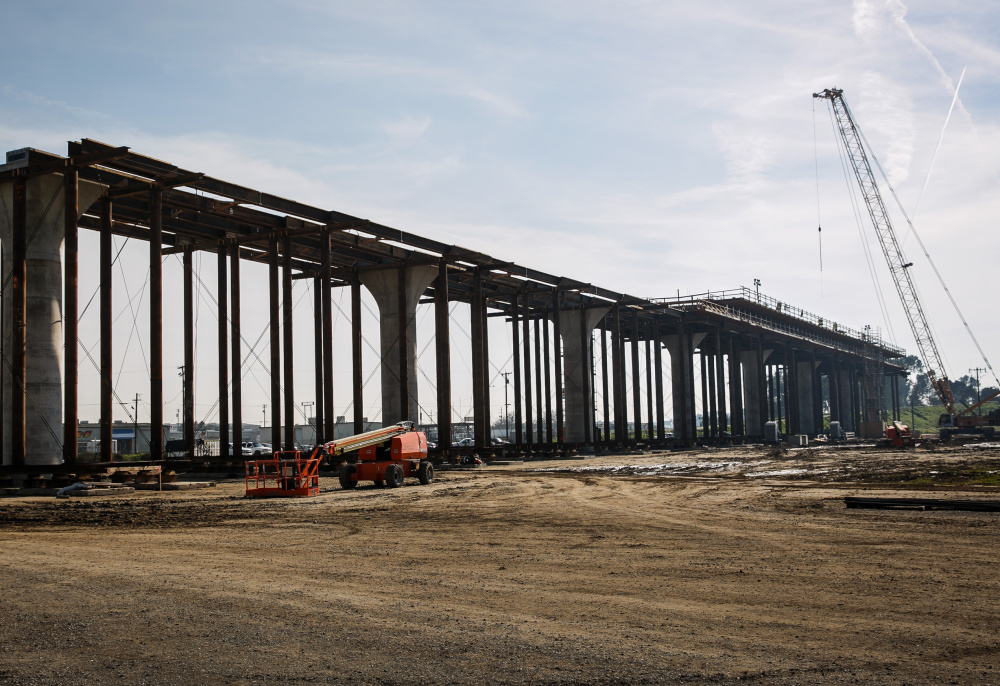WASHINGTON — Could Donald Trump be the president who brings high-speed rail to America?
The Obama administration spent nearly $10 billion to improve passenger rail service across the country. While it accomplished that goal to some degree, it did not build the faster trains passengers can ride in Europe, Japan and China.
Trains in other countries can travel 200 mph or more, but no train in the United States as yet travels faster than 150 mph. Most go much more slowly than that.
Trump has proposed a $1 trillion investment in U.S. infrastructure, and he has expressed interest in improving roads, bridges, airports and passenger trains.
The subject came up in a White House news conference Friday with Japanese Prime Minister Shinzo Abe.
Through a translator, Abe said Trump would make “major-scale investments” in infrastructure, including high-speed rail.
He said Japanese technology could cut the travel time between Washington and New York to one hour from the current three.
Before a meeting with airline executives Thursday, Trump had openly lamented the lack of high-speed rail in the United States.
“I don’t want to compete with your business,” Trump said, “but we don’t have one fast train.”
Funding, though, remains a huge hurdle.
Trump hasn’t been very specific about how he’d pay for these investments, other than to say the private sector would have a more important role. Getting federal money could be difficult, as a Republican-led Congress is expected to look aggressively for ways to save money.
PRIVATE SECTOR MAY BALK
Political and regulatory barriers, such as those recently experienced in California, can discourage private interests from spending the massive amount of capital that’s needed upfront.
Giving private participants certainty about their investment would remove one of the biggest barriers to getting projects off the ground, said Rob Puentes, president and CEO of the Eno Center for Transportation, a Washington policy group.
“The private folks will take on ridership risks, things they can control,” he said. “It’s the things they can’t control.”
Trump, a Manhattan real estate developer, knows well from his own personal and business experience as a native of the nation’s largest city about the ability of rail systems to move people around and between dense population centers.
“He fully understands the value of rail investment and the ability of rail to move lots of people in and out, which is very promising,” said Andy Kunz, president and CEO of the U.S. High Speed Rail Association, a trade group.
Trump’s remarks drew praise from one of his biggest critics, and one of high-speed rail’s biggest promoters, Democratic California Gov. Jerry Brown. “California’s ready,” he tweeted Thursday.
California is building an 800-mile system that’s eventually supposed to connect San Francisco, Los Angeles, San Diego and Sacramento with 200 mph trains.
But it’s been delayed by rising costs and opposition from landowners and Republicans in Congress.
There is a pent-up demand for high-speed rail in the United States, Puentes said.
“It’s a proven technology that can be efficient and effective when done right,” he said. “The challenge is where you do it, and how do you get it done.”
Last month, a couple of other high-speed-rail projects appeared on an initial list of 50 priority infrastructure projects drafted by a consulting firm with ties to the Trump transition team.
First on the list: The Gateway Program, which would replace century-old rail tunnels under the Hudson River between New Jersey and New York and allow a doubling of the number of Amtrak and commuter trains into Manhattan.
FUNDING NEEDED FOR PROJECTS
Amtrak’s long-term vision for the Northeast Corridor includes upgrading the entire route between Washington and Boston for speeds above the current maximum of 150 mph.
The two single-track tunnels under the Hudson were built in 1910 and sustained severe damage from Hurricane Sandy in 2012.
The Northeast Corridor, however, needs billions of dollars more in improvements, such as replacing old bridges and tunnels and straightening out curves. Amtrak declined Friday to comment.
The Texas Central Railway, a 250-mile high-speed route between Dallas and Houston, also made the list. Unlike the Gateway Program, however, Texas Central doesn’t seek federal funding to build its 200-mph service.
The route and the trains will be built with private funds, and the trains will be similar to the ones in operation between Tokyo and Osaka, Japan, for more than 50 years.
Still, Texas Central needs permits to begin construction, and that’s where Trump may be able to accelerate the process. He campaigned on a promise to reduce the regulatory hurdles that delay the development of infrastructure.
“The Texas project is pleased to be considered among the nation’s infrastructure priorities,” Texas Central Railway said. “We look forward to working with the new administration, moving ahead with the project’s free-market approach.”
Send questions/comments to the editors.



Comments are no longer available on this story